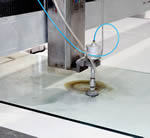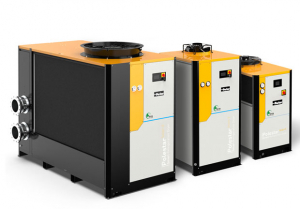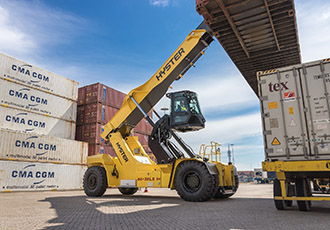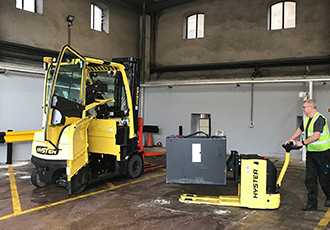Water Jet Cutting is Three Times Faster than Routing
9th August 2012
Source:
Emperor Glass

Emperor Glass is able to provide an even faster service since installing a CNC water jet cutting machine powered by a KMT NEOLINE pump. The machine has been in operation since February 2012 processing glass sheets measuring up to 6.4 x 3.2 metres. It has resulted in a threefold reduction in the time taken to profile glass compared with using CNC routing, drilling and polishing centres on site.
Another benefit is that other materials such as metal, stone and granite can be processed by the water jet machine without any alteration to the machine set-up, whereas to achieve similar on the router would require complete tooling changes.
Hazim Uddin, Chief Technical Officer at Emperor Glass, commented, We pride ourselves on fast turnaround times from order to delivery and realised several years ago that we could reduce lead times further using water jet cutting.
We spent three years researching the market, concentrating in particular on the all-important high-pressure pump that delivers the water and garnet abrasive at over 50,000 psi.
The NEOLINE pump from KMT came out on top during our search in terms of the main parameters we reviewed, namely cost, performance, operational reliability and service.
He went on to compare the production of a typical 2 x 1 metre glass door using the two different machining processes.
With CNC routing, the route involves trimming a sheet to size plus 10 mm all round on a separate cutting table, transferring it to the router and downloading the program, removing 8 mm from the periphery in a first pass and 1.5 mm in a second, completing any drilling and profiling according to the design, and polishing the edges in three or four operations using successively finer abrasive. Floor-to-floor time is 30 to 45 minutes.
On the water jet machine, multiple components are nested in a program so that they can be cut from one large sheet to save glass. Up to nine doors can be produced from a single sheet and no prior cutting to size is necessary. Each door is cut with a 3 mm allowance for polishing and perhaps also bevelling the edges. The time to produce one door using this method and then finish the edges on a separate machine is between 10 and 15 minutes.
Mr Uddin has found a novel way of removing an additional step previously required when water jet cutting. Any parts of the profile that were not subsequently polished had to be arrissed to remove sharp edges, otherwise rapid heating and cooling during toughening could cause cracks to emanate from stress points. The need to arris before toughening has been eliminated by slowing the feed rate of the water jet on raw edges that will not be polished.
A further benefit of water jet cutting is the ability to incorporate clients' logos easily, even intricate designs, into glass or other materials. It is simply necessary to create a DXF file from CAD data and add the routine to the machining program. Processing of thick material up to, say, 200 mm is possible using a KMT NEOLINE system, although so far, Emperor Glass has cut standard, laminated and fire-retardant glass up to 19 mm thick.
Hazim Uddin, Chief Technical Officer at Emperor Glass, commented, We pride ourselves on fast turnaround times from order to delivery and realised several years ago that we could reduce lead times further using water jet cutting.
We spent three years researching the market, concentrating in particular on the all-important high-pressure pump that delivers the water and garnet abrasive at over 50,000 psi.
The NEOLINE pump from KMT came out on top during our search in terms of the main parameters we reviewed, namely cost, performance, operational reliability and service.
He went on to compare the production of a typical 2 x 1 metre glass door using the two different machining processes.
With CNC routing, the route involves trimming a sheet to size plus 10 mm all round on a separate cutting table, transferring it to the router and downloading the program, removing 8 mm from the periphery in a first pass and 1.5 mm in a second, completing any drilling and profiling according to the design, and polishing the edges in three or four operations using successively finer abrasive. Floor-to-floor time is 30 to 45 minutes.
On the water jet machine, multiple components are nested in a program so that they can be cut from one large sheet to save glass. Up to nine doors can be produced from a single sheet and no prior cutting to size is necessary. Each door is cut with a 3 mm allowance for polishing and perhaps also bevelling the edges. The time to produce one door using this method and then finish the edges on a separate machine is between 10 and 15 minutes.
Mr Uddin has found a novel way of removing an additional step previously required when water jet cutting. Any parts of the profile that were not subsequently polished had to be arrissed to remove sharp edges, otherwise rapid heating and cooling during toughening could cause cracks to emanate from stress points. The need to arris before toughening has been eliminated by slowing the feed rate of the water jet on raw edges that will not be polished.
A further benefit of water jet cutting is the ability to incorporate clients' logos easily, even intricate designs, into glass or other materials. It is simply necessary to create a DXF file from CAD data and add the routine to the machining program. Processing of thick material up to, say, 200 mm is possible using a KMT NEOLINE system, although so far, Emperor Glass has cut standard, laminated and fire-retardant glass up to 19 mm thick.
Similar articles
More from Emperor Glass
- Water Jet Cutting is Three Times Faster than Routing 9th August 2012




.jpg)







Write a comment
No comments